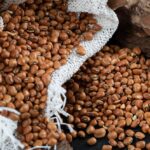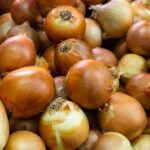Tarragon is a popular herb known for its distinct flavor and culinary uses, particularly in French cuisine. However, like many plants, tarragon is susceptible to root rot, a condition often caused by overwatering or poor drainage. Recognizing the early signs of root rot is crucial to saving your tarragon and ensuring its healthy growth. Here are ten early signs to look out for:
1. Yellowing Leaves
One of the first signs of root rot in tarragon is yellowing leaves. Healthy tarragon has vibrant green foliage, so if you notice your leaves turning yellow, it may indicate that the roots are struggling to absorb nutrients due to decay.
2. Wilting or Drooping
If your tarragon appears wilted or droopy, despite being watered, it can be a sign of root rot. This occurs because damaged roots cannot transport water effectively, leading to dehydration of the plant.
3. Soft or Mushy Stems
Check the stems of your tarragon. If they feel soft or mushy, it’s a strong indication of root rot. Healthy stems should be firm and resilient. Soft stems may indicate that rot is affecting the plant’s structure.
4. Foul Odor
Root rot can produce a foul, musty smell as the roots decay. If you notice an unpleasant odor coming from the soil, it could be a sign of rot affecting your tarragon’s roots.
5. Brown or Black Roots
Healthy tarragon roots are usually white or light tan. If you gently remove the plant from its pot and observe brown or black roots, this is a clear indicator of root rot. Healthy roots should be firm and free of dark discoloration.
6. Slow Growth
If your tarragon is growing more slowly than usual, it may be suffering from root rot. A lack of new growth can indicate that the roots are damaged and unable to provide the necessary nutrients for healthy development.
7. Leaf Drop
An increase in leaf drop can signal root rot. If your tarragon is losing leaves prematurely, it may be struggling to maintain its foliage due to unhealthy roots.
8. Mold on Soil Surface
The presence of mold or a white fuzzy substance on the soil’s surface can suggest overwatering and potential root rot. This is often a sign of excess moisture, which promotes fungal growth.
9. Pests or Insects
Sometimes, root rot can attract pests or insects to the plant. If you notice pests around your tarragon or on the plant itself, it could be due to the stress caused by root rot.
10. Soil Condition
Pay attention to the soil condition. If the soil is consistently soggy or retains too much moisture, it can lead to root rot. Well-draining soil is essential for healthy tarragon growth.
Prevention and Treatment
To prevent root rot, ensure that your tarragon is planted in well-draining soil and avoid overwatering. If you suspect your tarragon has root rot, consider repotting it in fresh soil, trimming away any damaged roots, and allowing the soil to dry out before watering again. Regular monitoring and care can help keep your tarragon healthy and thriving.
By being vigilant and recognizing these early signs of root rot, you can take action to save your tarragon and enjoy its fresh flavor in your culinary creations.







